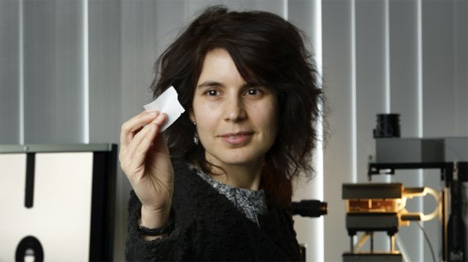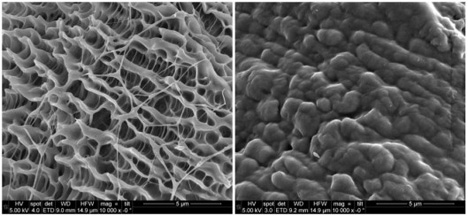
In the desert, spiders use their webs to capture moisture from the nightly fogs. This environmental water would be unavailable for drinking without the intelligent use of readily-available materials. It was this adaptive use that inspired researchers at the Eindhoven University of Technology to create a specially coated cotton that can capture moisture from nightly fogs and turn it into perfectly pure drinking water as the sun warms it. Under normal conditions, cotton can only absorb 18 percent of its weight in moisture. After applying a polymer to the cotton known as PNIPAAm, the cloth is able to absorb an amazing 340 percent of its own weight in liquid.

The coated cotton is hydrophilic (or absorbent) at lower temperatures, but when it warms up it is hydrophobic – it actually repels water. In the image above, the fibers on the left are the cotton in a hydrophilic state and those on the right are the cotton in its hydrophobic state. In the desert, this fabric would absorb the fogs that roll in overnight, and as the sun rises and warms the fabric the moisture would effectively be squeezed out by the fabric itself into a waiting receptacle below. The water is safe to consume and the polymer-coated cotton stands up to repeated uses. The researchers are now just looking for ways to improve the fabric’s performance – then we may see it used to make moisture-collecting tents or athletic clothing that that keeps sweat away from skin.

